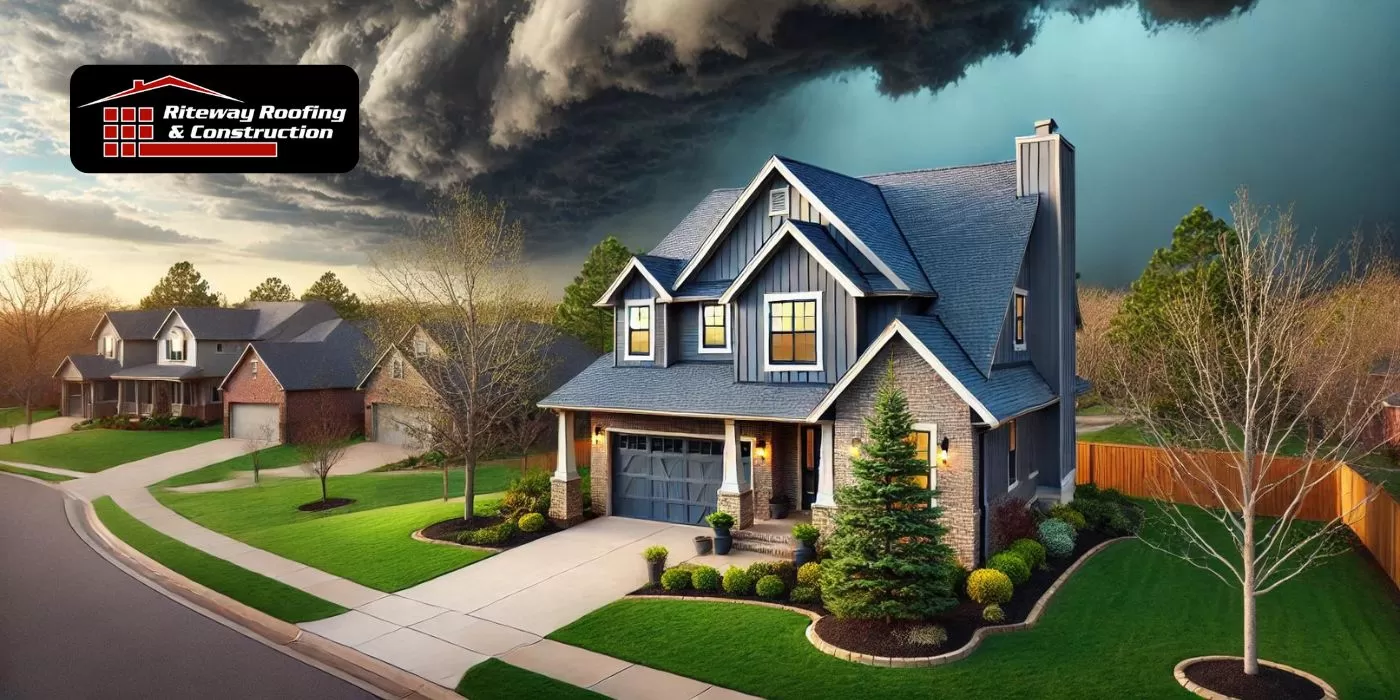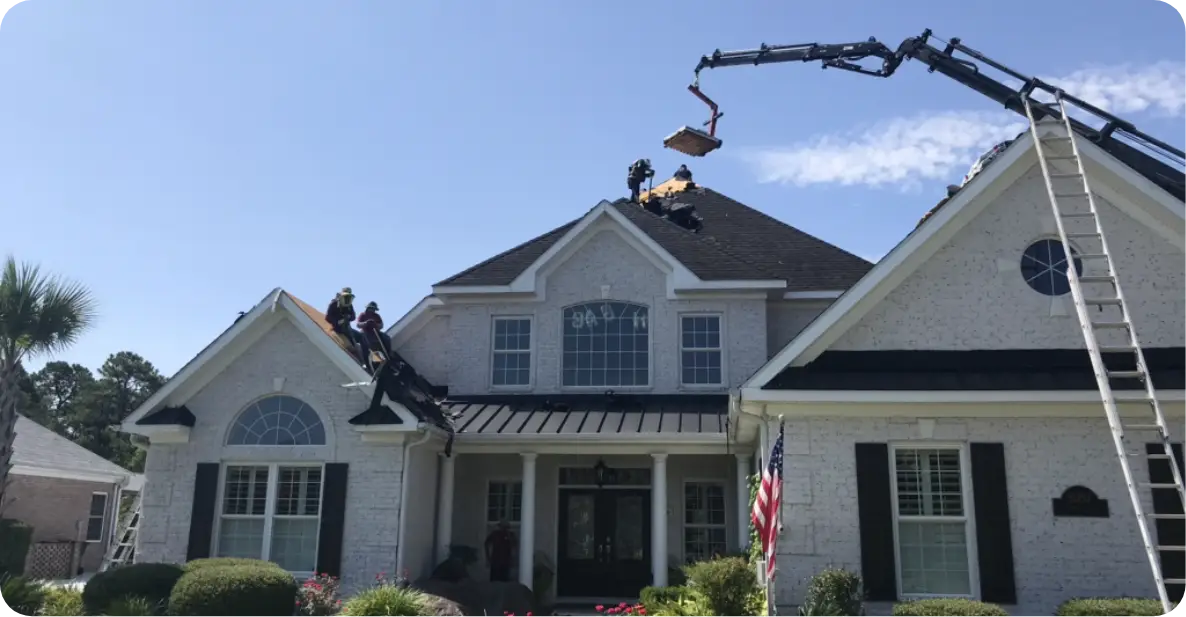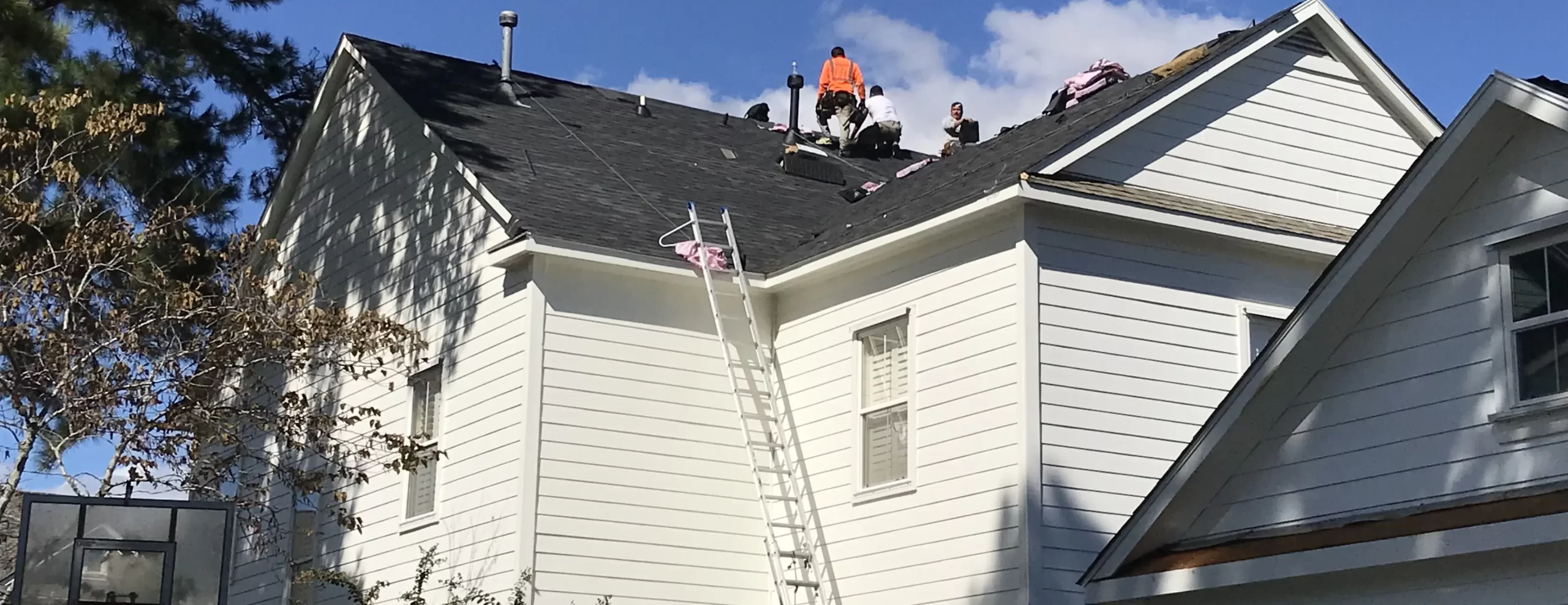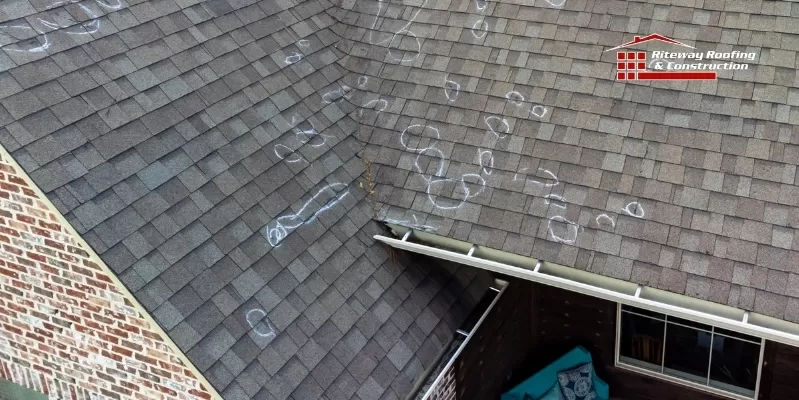Roof ventilation is a game-changer, folks.
Believe it or not, when the summer heat kicks in, a top concern for homeowners becomes…
Roof ventilation.
The majority have NO clue how it works. But this is what separates an uninformed homeowner from an energy-efficient household master. If you don’t understand roof ventilation fully, your home will never reach its full cooling potential during those hot months.
Table Of Contents:
- Table of Contents:
- The Importance of Roof Ventilation in Summer Heat
- The Science Behind Roof Ventilation Systems
- Different Types of Roof Vents and Their Benefits
- How Proper Ventilation Protects Your Roof Structure
- Ensuring Proper Ventilation for Your Attic Space
- The Impact of Roof Ventilation on Energy Efficiency
- Making Informed Decisions about Your Roof System
- FAQs in Relation to Roof Ventilation
- Conclusion
The Importance of Roof Ventilation in Summer Heat
In the scorching summer months, roof ventilation becomes a lifeline for your home.
A well-ventilated roof helps maintain indoor temperature and prevents potential damage to your roofing material, including warping or cracking due to excessive heat exposure.
Maintaining Indoor Temperature
With a proper attic ventilation system installed, you’ll regulate air flow within the space under your roof.
This balance between intake and exhaust vents ensures that hot air doesn’t get trapped inside.
Saving Energy with Proper Ventilation
Poorly ventilated roofs can lead to increased energy consumption during summers as cooling systems work overtime trying to lower temperatures caused by warm air buildup.
- An efficient solution is a balanced attic ventilation system which allows cooler outside air through soffit vents into the vented attic while pushing out warmer interior air via ridge or power vents located at the highest point on your rooftop – often referred as ‘roof’s peak’ – thereby reducing strain on HVAC units.
- This results not only in comfortable living spaces but also contributes significantly towards lowering utility bills.
Homes without adequate insulation are more prone to structural issues like rotting wood sheathing, mold growth, and even shingle deterioration over time.
The Science Behind Roof Ventilation Systems
Ever wondered how roof ventilation systems work?
It’s all about air flow.
A well-designed system harnesses the natural movement of hot and cooler air, creating a cycle that helps maintain comfortable temperatures in your home.
Understanding Hot Air Movement
You’ve probably heard it before – warm air rises. This principle is key to understanding why attic vents are crucial for any house.
In summer months, as heat builds up in your living space, it naturally moves towards the roof’s peak. Here’s where ridge vents come into play.
Role of Cooler Air Intake
Soffit vents serve an equally important role on the intake side of things. They allow fresh cooler outdoor air to enter into the attic space which pushes out hotter indoor atmosphere through those previously mentioned ridge or power ventilations points.
This process reduces overall temperature within both areas – making sure you stay cool during scorching summers.
A balanced attic ventilation system takes advantage these two types: intake (soffits) & exhaust (ridge/power), working together seamlessly for optimal results.
Different Types of Roof Vents and Their Benefits
The following crucial components play a significant role in your home’s overall roof ventilation system.
Ridge Vents: The Peak Performers
Ridge vents, located at the peak or ridge line of your roof, allow hot air to escape from the attic space.
Their strategic placement takes advantage of natural airflow dynamics where warm air rises to the highest point – that is, your roof’s peak.
Soffit Vents: Intake Specialists
Soffit vents, typically installed under eaves, provide an entry point for cooler outside air into your vented attic. This helps maintain balanced temperature levels within living spaces during summer heatwaves.
Power Vents: Forced Air Champions
Last but not least are power vents (also known as turbine or electric-powered fans).
Apart from being cost-effective options, power vents are designed specifically for exhaust ventilation purposes – expelling trapped hot air out while drawing fresh cool one inside. In essence, each type plays its unique part towards maintaining optimum conditions within our homes by ensuring effective flow between incoming and outgoing airs through their distinct functionalities.
How Proper Ventilation Protects Your Roof Structure
Adequate attic ventilation is a vital part of maintaining your roof’s integrity.
It plays an essential role in protecting components like the roofing material, roof sheathing, and roof deck from potential damage.
The main culprits? Excessive heat or moisture buildup.
Prolonging The Life Of Your Roofing Material
Your chosen roofing material needs to withstand varying weather conditions.
In summer months especially, proper ventilation helps prevent warping or other forms of degradation caused by intense heat.
Safeguarding The Structural Integrity Of Your Roof Sheathing And Deck
This makes it more important than vent channel effectiveness itself.
An overheated attic can lead to warped or cracked sheathing over time while accumulated moisture may result in mold growth on your roof deck – both scenarios you want to avoid for sure.
To ensure longevity and performance of your home’s crown jewel – its protective shield against nature’s elements – investing in effective exhaust vents is key.
Ensuring Proper Ventilation for Your Attic Space
Your attic’s ventilation is crucial.
The quality of cellulose insulation, positioning of exhaust vents, and clear air flow pathways all play a role in this.
Importance of Balanced Attic Ventilation System
A balanced attic ventilation system is crucial for maintaining the health of your home. It involves having equal amounts of air intake and exhaust to ensure a continuous, balanced flow of air. This helps to reduce overheating and moisture build-up, which can lead to issues like ice damming and damage to your roofing system.
The system works by allowing cool, fresh air to enter the attic through intake vents located at the eaves, soffits, or fascias of the roof. Simultaneously, hot, moist air is allowed to escape through exhaust vents at or near the roof ridge. This exchange of air helps to regulate the temperature and humidity levels in the attic, preventing the buildup of excess heat and moisture that can cause damage to your home.
In the summer, a well-balanced attic ventilation system can help reduce the load on your air conditioning system by exhausting superheated air from the attic. In colder climates, proper ventilation can help prevent ice damming, a common issue that can cause significant damage to your roof and home.
In essence, a balanced attic ventilation system allows your attic—and your entire home—to breathe, replacing stale, overheated air with fresh air from outside. This is why it’s not just about having enough roof vents, but about having the right balance of intake ventilation and exhaust ventilation.
Regular Inspection & Maintenance
Maintaining the functionality of your attic vents, especially during summer heat, requires regular inspection routines.
- Clogged or blocked soffit vents can prevent cooler air from entering the vented attic.
- An obstructed ridge vent hampers warm air expulsion at the roof’s peak.
- Inefficient power vents may fail to expel hot air properly causing an increase in temperature within living spaces.
We provide helpful tips on what homeowners should look out for when inspecting their roofs. Visit our Raising Roofs blog for more helpful roofing tips to protect your property, avoid costly repairs, and extend the life of your roof.
If you’d like professional assistance with your roof, call on the help of the experts at Riteway Roofing. We’re just a call away!
Charleston SC
(843) 467-5943
Myrtle Beach SC
(843) 424-7351
Oklahoma City OK
(405) 243-6116
The Impact of Roof Ventilation on Energy Efficiency
Ever thought about how your roof ventilation affects energy efficiency?
You might be surprised.
Proper roof venting, believe it or not, plays a significant role in reducing cooling load during hot weather.
This is crucial for those scorching summer months when the air conditioner seems to run non-stop.
Air Flow and Cooling Load: The Connection
Your attic acts as an insulator between the sun’s heat and your living space.
Research confirms that good attic ventilation can lower temperatures by up to 10 degrees Fahrenheit.
But here’s where proper intake and exhaust vents come into play.
They ensure efficient air flow throughout the attic space, replacing warm air with cooler outside air.
This process reduces strain on your AC system while maintaining comfortable indoor temperature levels.
Saving Money with Proper Attic Vents
By effectively managing this balance between hot and cool airflow, you’re also saving money. How?
Well, less reliance on artificial cooling means reduced electricity bills – a win-win situation for both comfort and cost-efficiency.
Research indicates that creating effective ventilation in an attic is often easier – not to mention cheaper – than achieving similar insulation value directly within the actual roof plane.
So next time you think about home improvements consider investing some time (and perhaps even professional help) into optimizing your roof’s peak performance through better ventilation systems.
Making Informed Decisions about Your Roof System
Understanding your roof system is essential for making informed decisions.
Your home’s comfort and energy efficiency depend on a well-ventilated attic space, but what does this entail?
Decoding Building Codes Related to Vented Attics
The first step in understanding the specifics of roof ventilation involves decoding building codes related to vented attics.
You might be surprised at how much these regulations can impact your living space.
Navigating Through Terminology
Buzzwords like ‘roof deck’, ‘soffit vents’, or ‘cellulose insulation’ may seem daunting initially.
An excellent resource, simplifies such terms and concepts.
Determining Adequate Ventilation Levels
A properly ventilated attic doesn’t just involve installing exhaust vents randomly across the roof sheathing.
An effective balanced attic ventilation system requires strategic placement of intake and exhaust points ensuring optimal air flow throughout the entire roof structure.
Finding The Right Professionals For Installation And Maintenance Services.
Selecting roofing professionals who understand proper ventilation techniques ensures that you’re getting more than just a visually appealing exterior.
FAQs in Relation to Roof Ventilation
What is the rule for roof ventilation?
The general rule for roof ventilation is a ratio of 1:300, meaning one square foot of vent area for every 300 square feet of attic space to ensure proper airflow and temperature regulation.
How effective is roof ventilation?
Roof ventilation effectively regulates attic temperatures, prevents moisture buildup, protects roofing components from damage and enhances overall energy efficiency when properly installed and maintained.
What is the most effective type of roof ventilation?
A balanced system using both intake vents (like soffit vents) and exhaust vents (such as ridge or power vents) tends to be the most effective type of roof ventilation.
What happens if a roof is not vented properly?
Improperly vented roofs can lead to excessive heat and moisture build-up, causing potential damage to roofing materials, increased cooling costs, and decreased energy efficiency.
Conclusion
If you’re ready to transform your home into an oasis amidst the summer heat…
Roof ventilation is no small matter. It’s the unsung hero of a cool, comfortable home in summer. The science behind it? Intricate yet fascinating. It all boils down to hot air movement and cooler air intake. Ridge vents, soffit vents, power vents – they each play their part in this grand orchestra of airflow.
Adequate attic ventilation doesn’t just keep you comfy; it shields your roof structure from potential damage too!
Your efforts? They pay off in energy efficiency – less cooling load equals more savings on those bills!
Riteway Roofs, with its expert roofing services including roof ventilation systems, can help make that happen.
Making us your one-stop-shop for complete residential solutions.
And let’s start working towards a cooler tomorrow!
Don’t let the blazing summer heat take a toll on your roof and home. Ensure your attic ventilation system is balanced and functioning optimally with the help of the experts at Riteway Roofing. We’re just a call away! Call a location near you, or click below to Schedule Your FREE Inspection and estimate today:
Charleston SC
(843) 467-5943
Myrtle Beach SC
(843) 424-7351
Oklahoma City OK
(405) 243-6116








